Auxiliary to the National Medical Association (U.S.)
Historical Note
The Auxiliary of the National Medical Association was founded as the Woman's Auxiliary to the National Medical Association on August 20, 1936, by members of the National Medical Association (NMA) and their wives. A group of approximately forty- five wives of the members of the NMA gathered at a conference in Philadelphia, Pennsylvania, to form the organization, including Alma Wells (Mrs. John T. Givens) of Norfolk, Virginia, and Mrs. J.J. Thomas of St. Louis, Missouri, who served as temporary chairperson and secretary respectively. Doctors D.W. Byrd, M.O. Bousfield and J. H. Hale served as their advisors.
On August 19, 1937, in St. Louis, Missouri, Wells was elected as the official president and proclaimed the Founder of the Woman's Auxiliary to the National Medical Association. After the election of other officials, the organization's primary goal was to encourage a better relationship between families of men in the allied sciences, as well as service to their communities in the most effective way. The Auxiliary met annually during the annual NMA conventions. The first board meeting was held in April 1938, with the wives of doctors who were attending the Annual Clinic at the John Andrews Memorial Hospital, Tuskegee Institute, Alabama. The Auxiliary's membership had grown to over 300 women by 1939. It was later comprised of more than 5,000 physicians in more than 70 different medical societies ranging from the United States, Puerto Rico, and the Virgin Islands. The Auxiliary later had to be divided into central, eastern, northern, southern, and western zones, which would be overseen by zone directors. These zones would later be changed into six regions that matched the regional divisions of the NMA, and each region would be run by a regional vice president. The Auxiliary's official news publication, The Mouthpiece, was founded in 1938 and issued to the members quarterly. Its circulation later changed to twice a year.
The Alma Wells Givens Scholarship Fund was established in 1942 under the direction of Dr. Bessie B. Small of Denton, Maryland. Medical students at Meharry Medical College in Nashville, Tennessee, and Howard University College of Medicine in Washington, DC, were presented with the first annual scholarships. Under the direction of Mrs. LeCount Matthews of Washington, DC, the Auxiliary took up a Standardized Five Point Program in 1950 focused on target areas such as Health, Education, Legislation, Community Needs, and Human Relations. The program later changed to a Two Point Program on Health and Education, with subcategories on Legislation, Community Needs, and Human Relations in 1975. These programs were implemented throughout auxiliaries regionally and nationally at the organization's annual convention.
In 1961, the Omega Mason Nursing Scholarship was established by Dr. Vaughn Mason and his brother in honor of their mother, Mrs. Omega Mason. This scholarship would be presented to a nursing student during the national convention. However, the scholarship is not solely given to nursing students so it was renamed the Omega Mason Memorial Scholarship Award.
In 1974, the Board of Directors decided to hire its first staff because of the increasing workload, activities, and responsibilities of the Auxiliary. The position was titled the Administrative Assistant/Office Manager. At the 39th Annual Convention in 1975, the Auxiliary decided to update the constitution and change the name, so that they could open membership to not only wives of male physicians but also husbands of female physicians. The name was changed to the Auxiliary to the National Medical Association (ANMA), and since the change several men have joined the organization. The ANMA received its Certificate of Incorporation under the provisions of the District of Columbia Nonprofit Corporation Act on July 26, 1977, and became tax exempt on October 2, 1978. The Auxiliary was considered a publicly supported organization on April 9, 1980. In 1979, members voted to start a new sector of the Auxiliary called the House of Delegates. This would serve as the legislative body for the national auxiliary.
In years ranging from the early 1970s to the mid 1990s, the Auxiliary implemented many programs during its conventions that targeted areas such as education, health, and youth. Some of these programs included scholarships to many prestigious schools within the country, as well as seminars and activities that dealt with pregnancy, drug abuse, and violence. The Auxiliary to the National Medical Association was and still is a thriving organization.
Citation:
Author: Jayla JonesAbstract:
Auxiliary to the National Medical Association website, http://www.anmanet.org/index.php?option=com_content&view=article&id=9&Itemid=3 (Accessed February 2012).
Tucker, Marcus O. "The Role of the Women's [sic] Auxiliary to the National Medical Association in the Talent Recruitment Program." Journal of the National Medical Association. Vol. 57, no. 6 (November 1965), pp. 453-454.
